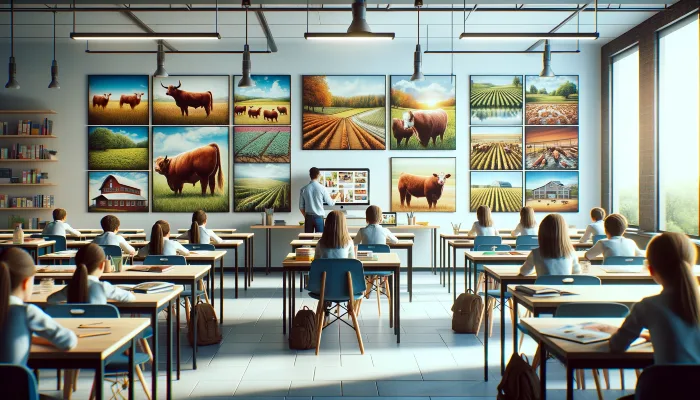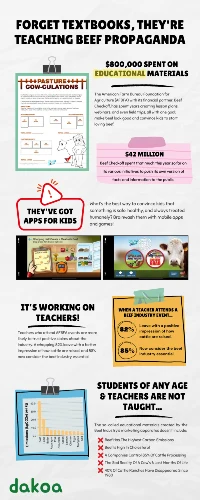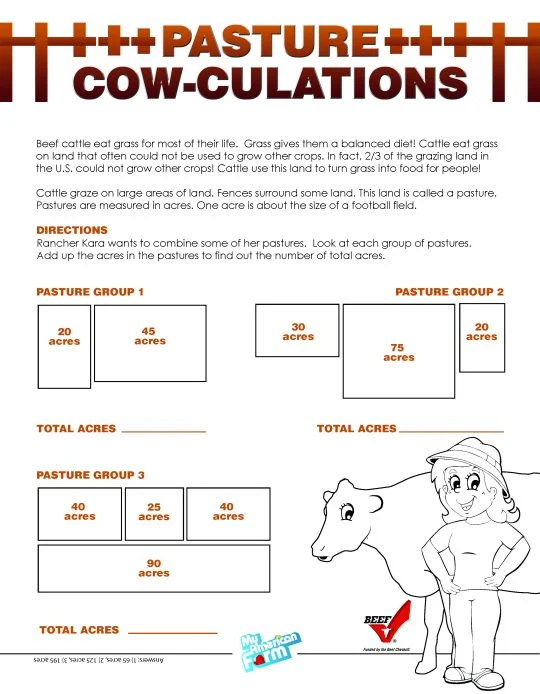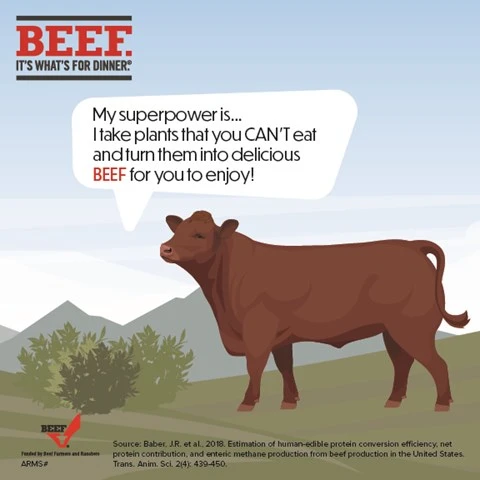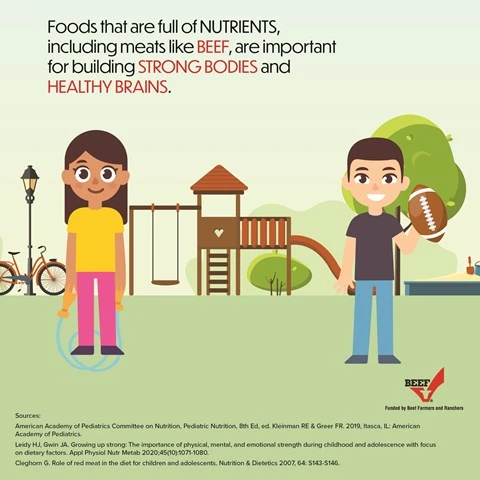Think those science lessons on nutrition and farming are unbiased? Think again. The beef industry is on a mission to influence how kids see their food, and it starts in the classroom. The American Farm Bureau Foundation for Agriculture (AFBFA) has spent years creating lesson plans, webinars, and even field trips, all with one goal: make beef look good.
The Stakes Are High
Why all the effort? Beef isn’t exactly known as a climate change hero. It has one of the biggest carbon footprints of any food. The industry worries about what that means for its future – especially as science teachers are “exposed to misinformation” (as the AFBFA sees it).
Their answer? Get to the kids first!
A Shift in Perception
It seems to be working. Teachers who attend AFBFA events are more likely to trust positive claims about the industry.
A whopping 82% leave with a better impression of how cattle are raised, and 85% consider the beef industry essential.
“The beef industry knows it has a trust issue,” says Jennifer Jacquet, a professor of environmental policy at the University of Miami.

Jan Dutkiewicz at the Pratt Institute adds that they’re going after kids to shape public opinion early on.
The AFBFA’s Playbook
So how does the AFBFA do it? Think lesson plans where kids design school menus using beef industry resources, or presentations about how great it would be to have cows in an ecological preserve. Even cute worksheets for elementary kids have them calculating cow pasture sizes, with reminders about how nutritious beef is. It’s subtle, but effective.
The AFBFA-provided resources for students feature images of happy cows in wide open fields.
While it’s true that most cattle in the US spends their first year in a pasture, over 70% (based on independent analysis from the nonprofit Sentience Institute) are then confined to highly-dense concentrated animal feeding operations and stalls for the final 6 months of their lives.
Yet, strangely, all of that is left out of the educational materials provided to both teachers and students through AFBFA.
Daniel Meloy, AFBFA’s executive director, says the goal is to help kids think critically about all the information they receive and “gain a greater understanding of agriculture through science education.” The director’s office has not commented on the convenient omissions in the materials provided to schools.
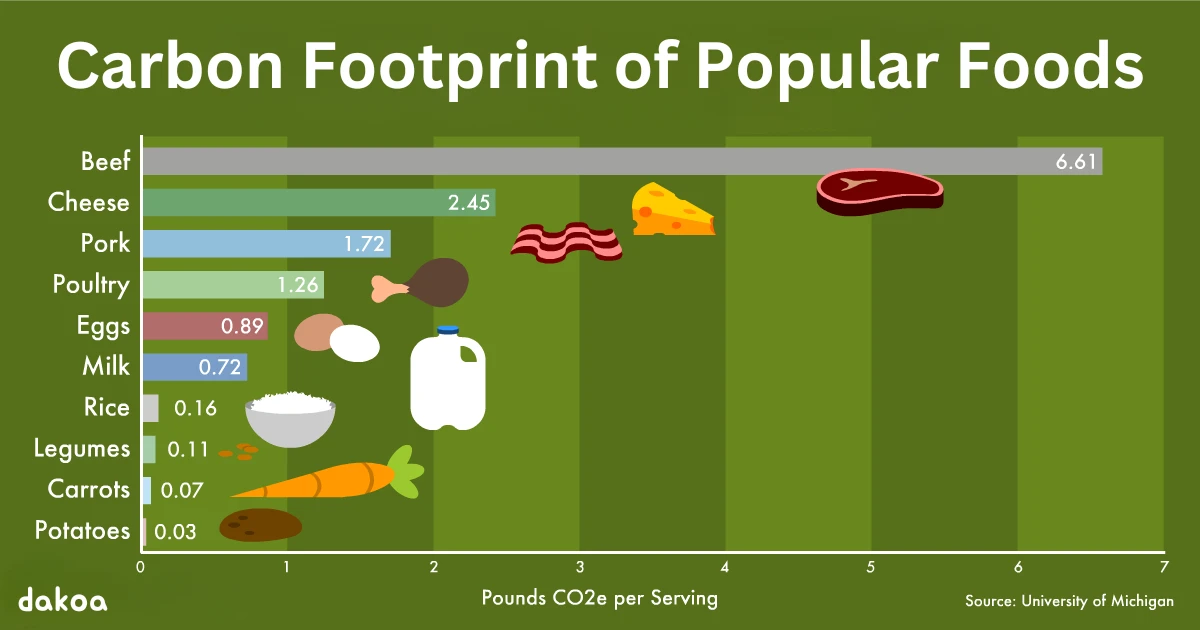
Under the Surface
The AFBFA is largely funded by the Beef Checkoff, a program you’ve probably never heard of but contribute to if you buy beef. This money helps drive their classroom campaign, costing an estimated $800,000 in 2024 alone.
In fact, many of the lesson plans provided by AFBFA directs students to beef industry resources like BeefNutritionEducation.org, BeefItsWhatsForDinner.com, and FactsAboutBeef.com – all funded by the Beef Checkoff scheme. In fact, if you head over to the Sustainability for Kids page on the Beef It’s What’s For Dinner site you can enjoy Beef’s Story Explained for kids which discusses how happy and healthy the cattle are and how beef helps kids build strong bones and brains, among other things. And before you ask… cholesterol is never mentioned.
The goal is evident – to increase demand for beef. The AFBFA is listed as a contractor for Beef Checkoff, which has spent $42M this year alone across its initiatives.
They also leverage big shifts like the new Next Generation Science Standards (NGSS), which emphasize real-world examples in lessons. You guessed it, the AFBFA sees this as a perfect opportunity to slip in beef-industry talking points under the guise of science.
Is This Really Okay?
Some experts are worried. “I worry that clearly partial resources that are strategically designed to achieve a corporate messaging are being provided by a Checkoff program,” Dutkiewicz says. He believes kids deserve objective information about food production, not industry-crafted propaganda.

The Long Game
The AFBFA plans to reach 2.5 million teachers and students, along with an additional 125,000 “key opinion leaders” by 2024.
They understand beef consumption is down among younger people and want to reverse the trend. Environmentalist Nusa Urbancic says it’s about normalizing beef and making it look socially and environmentally responsible, despite the realities of the industry.
“They’re really worried about younger generations,” says Nusa Urbancic, CEO at the environmental NGO, Changing Markets Foundation. “Teachers are a useful way to influence young people because they have credibility,” Urbancic points out.
More To Discover
- Yellowstone Faces ‘Zombie Deer Disease’ Threat, Scientists Warn of Human Risk
- Mark Zuckerberg Criticized for Luxury Cattle Ranch (Cows Enjoy Macadamia Nuts and Beer) in Hawaii, Raising Environmental and Social Concerns
- Setback for US Offshore Wind Ambitions as Orsted Halts Major Projects Citing Economic Pressures
- Revolutionizing Fabric Recycling: New Method From Denmark Could Transform the Clothing Industry
The Fight for Unbiased Education
Jennifer Jacquet warns that the meat and dairy lobby is extremely powerful. Unfortunately, there’s little organized pushback against efforts like the AFBFA’s in schools. “It’s a little terrifying to me that I don’t see anyone out in front of this—I don’t see the counterpoint to what they’re doing in schools,” she says.







